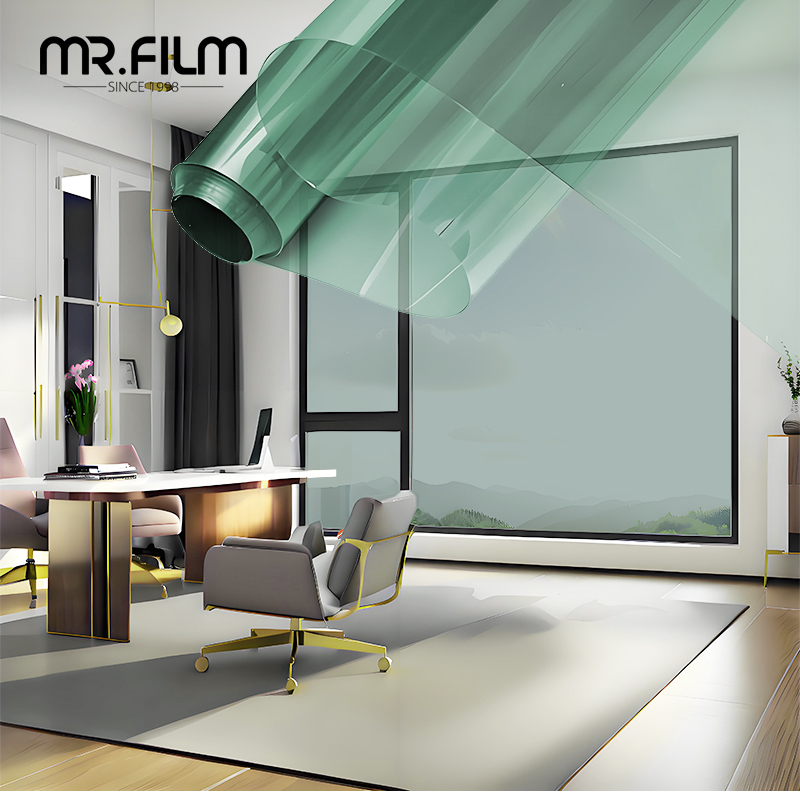Views: 0 Author: Site Editor Publish Time: 2025-06-24 Origin: Site
Window films have become a vital component in modern construction, offering a blend of sustainability, style, and functionality. From reducing energy costs to enhancing a building’s aesthetic value, these advanced solutions are transforming the way we design and construct spaces. This article explores the importance of building window films, their diverse applications, and why they are indispensable in today’s architectural landscape.
Window film is a thin, multi-layered sheet of polyester or other materials applied to windows’ surfaces. These films can serve various purposes, such as reducing glare, increasing privacy, improving energy efficiency, and protecting interiors from harmful UV rays. By offering solutions to several challenges, they play a crucial role in both residential and commercial construction projects.


Building window films provide a wide array of benefits that go beyond aesthetics. Here are three core advantages:
Window films, especially solar films, are designed to regulate indoor temperatures by reducing heat gain during summer and minimizing heat loss in winter. They can significantly lower energy consumption by keeping buildings naturally more comfortable, reducing the dependency on HVAC systems.
Unfiltered sunlight can cause harmful ultraviolet (UV) rays to penetrate indoor spaces, leading to furniture fading and potential health risks. Window films block up to 99% of UV rays, ensuring that interiors are protected and maintaining the longevity of furnishings and flooring.
Besides practicality, window films contribute aesthetically by offering a sleek and modern look. They are available in various designs, tints, and shades, allowing architects and designers to enhance the visual appeal of a building without compromising functionality.
Among the variety of window films available, solar films stand out for their energy-saving attributes. Here’s a closer look at their features:
Solar film is designed to reflect and absorb solar radiation, improving energy efficiency and reducing glare. This type of film is critical in warmer climates where controlling heat gain is paramount. It delivers a comfortable indoor environment while reducing cooling costs.
Used to enhance interiors, decorative films add patterns, frosts, or colors to windows, making them a popular choice for office partitions and residential spaces where style matters.
These films are engineered for protection, holding shattered glass together in the event of breakage. They are especially useful in areas prone to natural disasters or high-security zones.
Privacy films restrict visibility, providing optimum confidentiality for homes and offices. They come in opaque or semi-opaque formats to cater to different privacy levels.
These films improve thermal performance, particularly in colder environments, by reducing heat loss through windows.
Below is a detailed comparison to help assess these options more effectively.
Type of Window Film | Primary Benefit | Ideal For |
|---|---|---|
Solar Film | Energy efficiency, glare reduction | Commercial and residential windows |
Decorative Film | Stylish designs, aesthetic appeal | Interior space enhancements |
Safety & Security Film | Glass breakage protection | High-security zones, disaster-prone areas |
Privacy Film | Increased confidentiality | Office and residential interiors |
Insulating Film | Better thermal control | Cold climates, homes with large windows |
Window films find their use in various construction areas, offering functionality and innovation across sectors:
Homeowners often seek window films for privacy, UV protection, and energy savings. solar window film, for example, can keep homes cooler during hot summers without the need for heavy air-conditioning.
Office buildings benefit from window films for both style and utility. Tinted films reduce glare on computer screens, while decorative films create visually appealing interior partitions.
Factories and warehouses utilize safety and insulating films. These films enhance worker safety and manage the indoor environment efficiently, contributing to cost savings.
Schools, hospitals, and government buildings adopt window films to improve energy efficiency, ensure privacy, and enhance safety—all while being budget-friendly.
By serving such a broad range of applications, window films have become a staple in innovative building practices worldwide.


Here are some commonly asked questions about window films in construction:
Window film is a specialized material applied to glass surfaces in buildings to improve functionality and performance. It serves purposes such as controlling indoor temperatures, increasing privacy, reducing UV exposure, and adding aesthetic appeal.
Solar films reduce energy consumption by minimizing heat gain during warmer months and retaining warmth during colder periods. This lowers the strain on air-conditioning and heating systems, saving energy bills and creating more sustainable environments.
Unfortunately, window films are specifically designed for smooth glass surfaces. They are not intended for solid surfaces like walls or metal constructions. However, decorative and privacy films can be applied to other smooth, transparent materials such as glass dividers or acrylic panels in interiors.
Building window films are an invaluable addition to modern construction projects, offering durability, cost efficiency, and aesthetic value. Whether it’s energy savings through solar films, privacy enhancements, or improved safety, these versatile materials are a game-changer in architectural innovation.
For premium-quality window film solutions, MR.Film is the trusted brand to choose. With a commitment to excellence and innovation, MR.Film delivers top-tier products tailored for a variety of needs.
For inquiries or additional information, contact MR.Film via email at ella@mr-film.cn or call +86-13802606784. Investing in high-quality window films has never been easier—choose MR.Film for reliable solutions that elevate your building projects.

